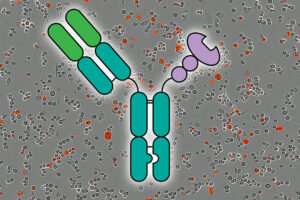
CLEVELAND—A groundbreaking discovery by scientists at Case Western Reserve University’s Institute for Glial Sciences (IGS) has unveiled a critical “brake” mechanism that regulates the maturation of essential brain cells. This finding, published today in the journal Cell, could pave the way for innovative treatments for multiple sclerosis (MS), a debilitating disease that impairs the nervous system by damaging myelin, the protective sheath surrounding neurons.
The research team, led by Paul Tesar, director of the IGS, identified a molecular brake that appears to remain engaged too long in MS, preventing oligodendrocytes—glial cells responsible for myelin repair—from maturing and repairing damaged tissue. “By identifying the molecular brake that controls when oligodendrocytes mature, we reveal a clear path to unlocking the brain’s own repair program,” Tesar stated.
Understanding the Brake Mechanism
The study delves into the maturation process of oligodendrocytes, which are part of the glial cell family, a group that constitutes over half of the cells in the nervous system but has historically been overshadowed by neurons in scientific research. The IGS, established last year, aims to shed light on the crucial roles these cells play in both health and disease.
Researchers tracked thousands of molecular changes as immature oligodendrocytes developed into myelin-forming cells. A protein named SOX6 was identified as a significant factor, acting as a brake that keeps cells in an immature state through a process known as “gene melting.”
“We were surprised to find that SOX6 can so tightly control when oligodendrocytes mature,” said Kevin Allan, co-lead author of the study. “This gives us a potential explanation for why these cells often cannot remyelinate damaged neurons in diseases like MS.”
Potential for Regenerative Therapies
The implications of this discovery are profound, particularly for MS patients who currently lack therapies capable of restoring lost myelin. “MS is a progressive disease that gets worse over time, and patients still lack therapies that can restore the myelin they’ve lost,” Tesar explained. “We believe these new insights will help deliver on the promise of regenerative therapies that MS patients so urgently need.”
In their experiments, the research team used a targeted molecular drug, an antisense oligonucleotide (ASO), to reduce SOX6 levels in mouse models. The results were promising: within days, the treated cells matured and began to myelinate nearby neurons.
“Our findings suggest that oligodendrocytes in MS are not permanently broken, but may simply be stalled,” said Jesse Zhan, co-lead author and medical student. “More importantly, we show that it is possible to release the brakes on these cells to resume their vital functions in the brain.”
Broader Implications and Future Research
The study’s findings also raise questions about the potential role of this brake mechanism in other neurological conditions. While the stalled maturation was specific to MS, with no evidence found in Alzheimer’s or Parkinson’s disease samples, the team is investigating whether similar mechanisms might contribute to other diseases.
The research was supported by several prominent institutions, including the National Institutes of Health and the Howard Hughes Medical Institute, highlighting the significance of this work in the scientific community. Collaborators from Ionis Pharmaceuticals, the Whitehead Institute, and Baylor College of Medicine also contributed to the study.
As the scientific community continues to explore the potential of this discovery, the hope is that it will lead to the development of new therapies that can effectively repair myelin and restore function in MS patients. The next steps will involve further research to understand the broader applications of this mechanism and to develop targeted treatments that can be tested in clinical trials.





